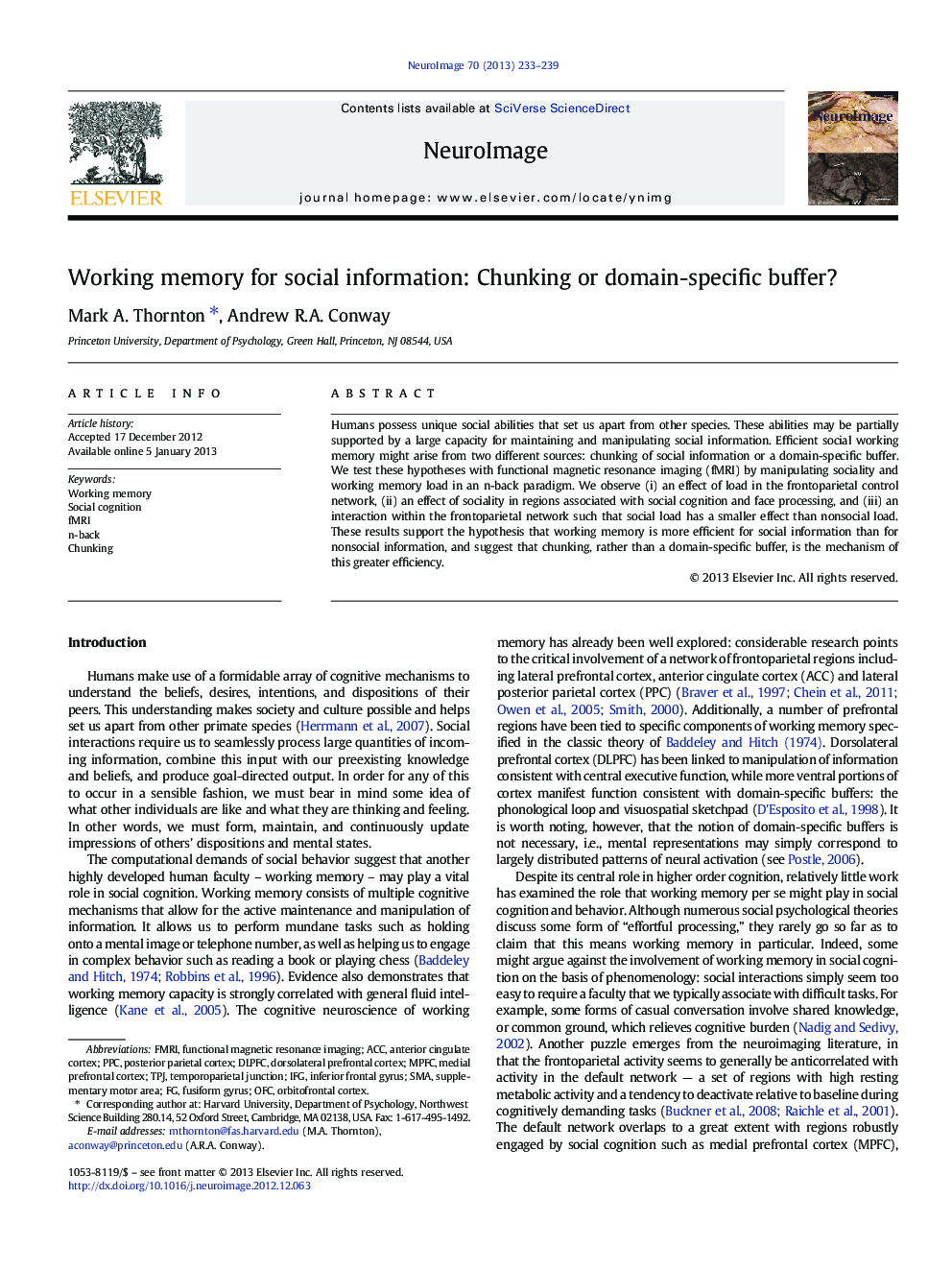| کد مقاله | کد نشریه | سال انتشار | مقاله انگلیسی | نسخه تمام متن |
|---|---|---|---|---|
| 6029877 | 1580934 | 2013 | 7 صفحه PDF | دانلود رایگان |
Humans possess unique social abilities that set us apart from other species. These abilities may be partially supported by a large capacity for maintaining and manipulating social information. Efficient social working memory might arise from two different sources: chunking of social information or a domain-specific buffer. We test these hypotheses with functional magnetic resonance imaging (fMRI) by manipulating sociality and working memory load in an n-back paradigm. We observe (i) an effect of load in the frontoparietal control network, (ii) an effect of sociality in regions associated with social cognition and face processing, and (iii) an interaction within the frontoparietal network such that social load has a smaller effect than nonsocial load. These results support the hypothesis that working memory is more efficient for social information than for nonsocial information, and suggest that chunking, rather than a domain-specific buffer, is the mechanism of this greater efficiency.
⺠Working memory load and sociality of information manipulated in n-back task. ⺠Performance and neural activity used to test efficient social memory hypotheses. ⺠Smaller load effect in social condition suggests efficient social processing. ⺠Absence of social-specific load suggests chunking rather than social buffer.
Journal: NeuroImage - Volume 70, 15 April 2013, Pages 233-239
